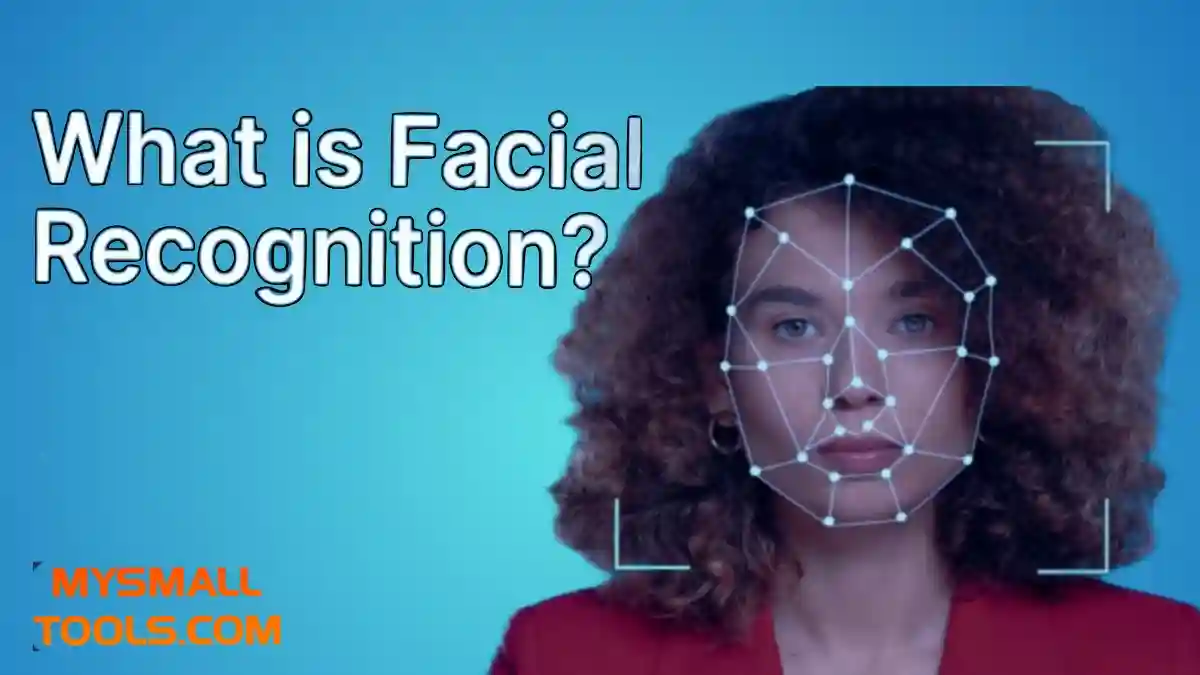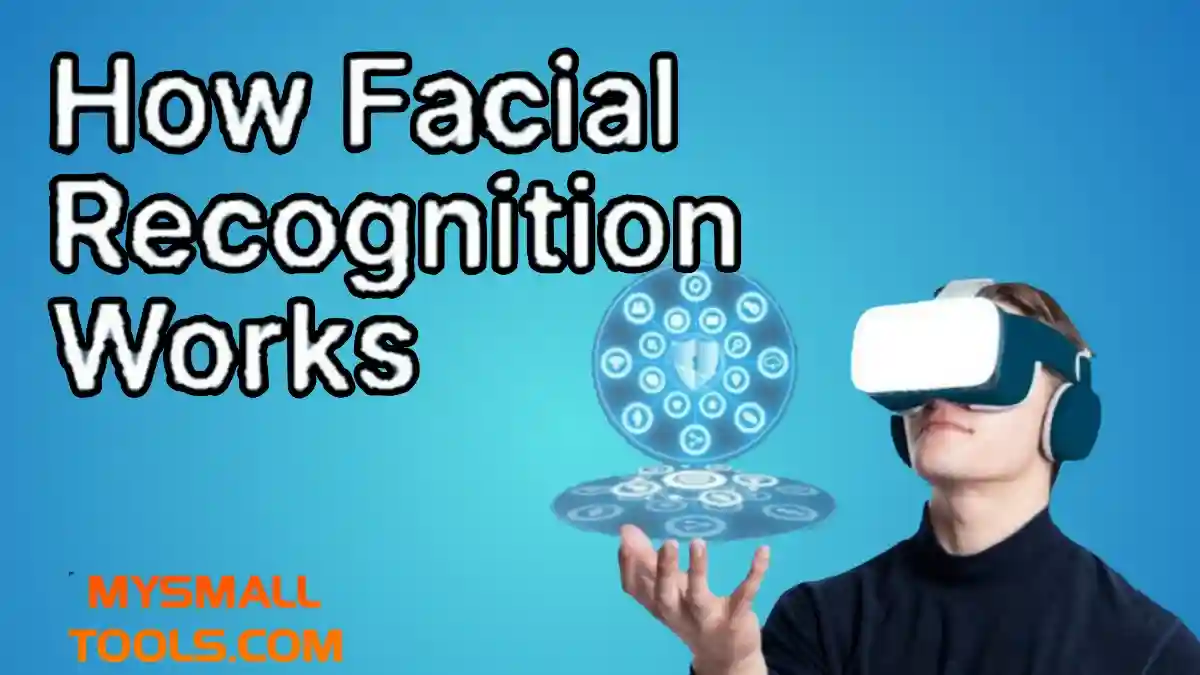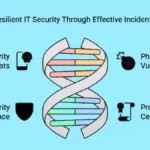Facial recognition represents a cutting-edge and advanced technology that has become ubiquitous in our daily lives. Many of us engage with this technology multiple times throughout the day, particularly when unlocking our smartphones using facial identification.
Have you ever paused to consider the underlying mechanics of this technology? What principles drive its operation? How does it quickly recognize faces and make accurate judgments? All of these questions are intended to be answered by this blog.
Let’s dive into the most crucial aspect!
What is Facial Recognition?
This technology is powered by artificial intelligence and is designed to recognize individuals based on the distinct characteristics of their faces. By leveraging computer vision along with sophisticated algorithms, it analyzes facial features and cross-references them with existing records in its database.

Every individual possesses unique facial characteristics, shapes, and formations, contributing to our distinctiveness, which can be recognized both by humans and machines alike. Facial recognition systems compile data about individuals from various sources and store it in databases to facilitate accurate identification. When a system encounters familiar facial traits, it can promptly identify the individual.
Although this technology has been around for a significant time, its initial effectiveness was limited. However, advancements in artificial intelligence have rendered it faster, more intelligent, and increasingly efficient. Today, we encounter it across diverse environments, such as airports, banks, workplaces, and retail establishments.
Also Read
Uses of Facial Recognition
As previously noted, the scope of facial recognition extends beyond a narrow range of applications. Instead, it is found across various sectors and industries, serving a multitude of purposes. Some applications are quite practical, while others seem almost futuristic. Let’s explore a few major applications.
Security and Monitoring
Without a doubt, one of the most prominent uses of facial recognition technology lies in the realm of security. This technology is predominantly utilized across multiple industries to safeguard individuals and information from various threats. Cameras equipped with facial recognition capabilities compare observed faces against databases; upon identifying a match, they grant access to secure information.
In various regions, law enforcement agencies employ facial recognition technologies to oversee public gatherings, track individuals of interest, and deter criminal activities. Cameras utilizing this technology analyze faces in real-time and notify authorities about individuals flagged on watchlists.
Smartphone Unlocking
The practice of securing mobile devices with passwords or PIN codes is becoming a thing of the past. Nowadays, the majority of users prefer to unlock their smartphones using facial recognition, which is one of its most popular applications.
You no longer have to memorize and enter lengthy passwords to access your device. Rather, just place your face in front of the phone’s camera, and it will unlock right away. Apple’s Face ID and the facial recognition feature in Android devices are excellent examples of this technology in action—offering rapid, convenient, and secure access.
Attendance Monitoring
The era of signing attendance sheets has been replaced. Facial recognition technology is being used more and more in workplaces and educational institutions to track attendance. Cameras scan the faces of individuals as they enter, automatically recording those present and absent. Such systems are highly efficient and accurate, benefiting nearly all types of organizations.
Access Management
Are you interested in accessing a restricted area? Alternatively, are you seeking methods to enhance the security of your own belongings? Facial recognition technology can be beneficial in either scenario. This is the reason it is implemented in various workplaces, research facilities, and even residential spaces.
Rather than using keys or cards, your visage serves as your access pass. The greatest advantage? It offers remarkable convenience and is difficult to replicate.
Yet, there is a drawback. Not every system is infallible. Cybercriminals have discovered ways to deceive certain systems. Thus, complete dependence on them is unwise. To ensure optimal security, it is essential to utilize the latest facial recognition technologies.
Travel and Transportation
Airports around the globe are adopting facial recognition technology for check-in, security checks, and boarding procedures. Airlines such as Delta and British Airways are at the forefront of this initiative. They have dramatically streamlined and expedited the boarding experience.
Simply scan your face and proceed through. Additionally, many train stations in China and Japan have adopted similar methods, allowing their citizens to board trains without tickets or passes, relying solely on their facial recognition.
Locating Individuals
Law enforcement organizations are employing facial recognition tools to identify and find individuals. In India, authorities managed to locate approximately 3,000 missing children within a mere four days thanks to this technology.
The facial search function of mysmalltools and reverse image search are examples of tools that regular users can use to find people online. For example, if you wish to reconnect with an old friend, posting their childhood image to an advanced facial recognition search engine can yield results. The tool will match faces with similar characteristics, enabling you to find their social media profiles if they have uploaded the same photo.
How Facial Recognition Works

While facial recognition may appear to be a form of sorcery, it is actually grounded in sophisticated algorithms and machine learning techniques. The facial recognition process comprises four primary stages:
Face Detection
Initially, the system identifies the individual’s face. It captures distinctive facial characteristics such as the shapes and arrangements of the eyes, nose, and mouth. Notably, the background is disregarded. Devices like smartphones, security cameras, and various social media platforms perform this detection automatically.
Analysis
After detection, the system examines significant features. It measures aspects such as the space between the eyes, the jawline’s contours, and the nose’s shape. This detailed analysis enables the software to craft a unique facial signature from the gathered information.
Feature Extraction
Here, the process becomes more intricate. The system translates your facial characteristics into data, thereby generating a mathematical model unique to you, akin to a digital fingerprint. However, it is not a photograph; it consists of numerical data that illustrates your facial features. This information is then securely stored in a database for future use.
Comparison
In the final step, the system contrasts the extracted data against images within its database. If a match is identified, your identity is confirmed. If no match is found, access is either denied or flagged for additional scrutiny. Modern systems can execute this function in mere milliseconds—it’s done before you even realize it.
Technological Foundations of Facial Recognition
Facial recognition is built upon advanced technology. Here’s a glimpse at the components that drive it:
Computer Vision
Computer vision represents a cutting-edge technology that enables machines to perceive their surroundings. What is truly remarkable about computer vision is that it goes beyond merely observing; it focuses on comprehension. It empowers a system to recognize that a face is indeed a face rather than something else, like a vehicle or a tree. This capability is essential for facial recognition systems, which identify faces, evaluate their characteristics, and differentiate between individuals.
Deep Neural Networks
Deep neural networks serve as the essential components behind this technology. They emulate the functioning of human brains and fall within the realm of artificial intelligence. Deep neural networks enable machines to assess images or faces in a manner akin to humans, which is why they play a pivotal role in most facial recognition applications. This innovative approach has significantly revolutionized the landscape of facial recognition technology.
Machine Learning
The ability of modern facial recognition systems to learn continuously is another noteworthy feature. This ongoing learning is made possible through machine learning. Algorithms for machine learning enhance identification processes by analyzing new data. With each face they examine, their accuracy improves. Over time, they adapt and refine their methods, becoming increasingly proficient.
Summarizing
Ultimately, facial recognition technology proves to be of great benefit to users. It is transforming the fields of security, monitoring, and data analysis, leading to its adoption by governments, law enforcement, financial institutions, and small to medium-sized enterprises.
Advanced facial recognition systems employ sophisticated technologies and algorithms to accurately interpret and analyze facial features. Yet, this is merely the beginning. As time progresses, these systems are expected to evolve and grow more advanced, attracting further interest from different sectors and unveiling a range of surprising advantages associated with this technology.


